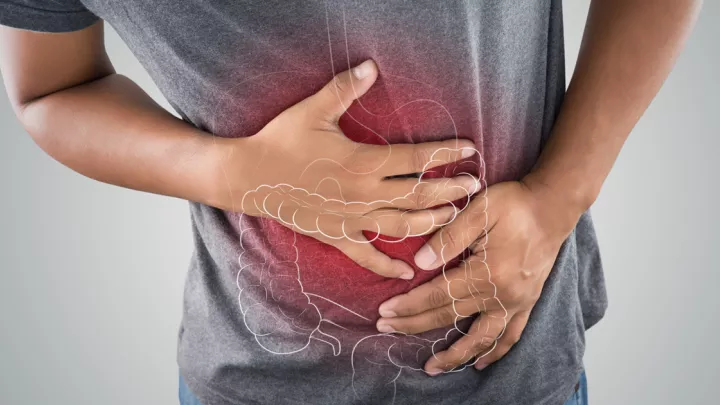What is the low FODMAP diet?

Gut health, including the gut-brain connection, plays a significant role in our overall health. If you’ve struggled with the gastrointestinal symptoms of irritable bowel syndrome, known as IBS, such as gas, bloating, abdominal pain or irritating bowel habits, an evidence-based low FODMAP diet may be helpful to determine what foods are irritating your gut.
It can be a challenge (and confusing) to figure it all out. Certain foods can trigger symptoms, but each body is different regarding what foods, portion sizes and combinations may cause symptoms from one person to another. Other factors may also contribute, like stress, quality of sleep, and mental health.
Working with a dietitian as you navigate a low FODMAP diet will help you succeed not only in finding your trigger foods but also help guide you to what foods are best for your gut health.
What are FODMAPs?
The acronym FODMAP stands for:
- F = fermentable
- O = oligosaccharides (fructans, galacto-oligosaccharides)
- D = disaccharides (lactose, milk sugars)
- M = monosaccarides (excess fructose)
- A = and
- P = polyols (sugar alcohols like mannitol and sorbitol)
FODMAPs are found in everyday foods we eat. A group of small chain carbohydrates, these sugar and fibers may not be adequately absorbed in the small intestines of certain people. “While we may think of carbs as bread or pasta, carbohydrates are also found in everyday foods like apples, garlic and even sugar-free gum,” says Nebraska Medicine nutrition therapist Marta Jonson, RDN.
This is where it gets tricky. There are low FODMAP foods, foods with no FODMAPs and high FODMAP foods. Symptoms can be triggered even by healthy foods.
“This is another good reason to work with a dietitian so you’re following the diet correctly,” adds Jonson. “For example, you may think you’re reacting to gluten when in reality, you may be reacting to certain fructans. People tend to associate elimination with bad foods, so it gets confusing when many healthy foods are high in FODMAPS, which aren't bad for you; they’re just foods that you can be sensitive to when you are prone to IBS symptoms.”
Examples include:
- Lactose foods like milk, yogurt, cheeses and ice cream
- High-fructose foods like apples, figs, watermelon, honey and high-fructose corn syrup
- Fructans like dried fruit, garlic, onion, nectarines and wheat
- Galatans like legumes, pistachios or cashews
- Polyols like blackberries, peaches, cauliflower, mushrooms and sugar alcohol additives
- See more examples of low and high FODMAP foods
FODMAPs can trigger IBS symptoms – here’s why
FODMAPs are small-chain carbohydrates. These carbohydrates can cause diarrhea in some people while causing constipation in others, depending on how the small intestine deals with the FODMAPs. Your gut may react by pulling in water and holding it there (or not) or create gas when the microbes ferment the carbohydrates in FODMAPs. This gas-and-water combination can contribute to uncomfortable symptoms and intestinal movement.
How does the low FODMAP diet work?
To help determine what foods are a problem for you, the low FODMAP diet removes certain foods from your diet that may be triggering your symptoms. It methodically reintroduces them back into your diet to test your tolerance to various FODMAP-containing foods. While it takes some time, this diet is not something you stay on forever.
The three phases of the low FODMAP diet:
- Elimination phase: Follow a low FODMAP diet for two to six weeks.
- Reintroduction phase: When symptoms are stable, FODMAP groups are gradually reintroduced into the diet for six to nine weeks. While maintaining the diet, your dietitian will guide you through a specific daily plan, including trying different portion sizes, to see how your body reacts before moving on to another FODMAP group.
- Personalization phase: At this point, you’ll know your trigger foods, what you can tolerate and how to balance your diet moving forward.
A dietitian is trained to support people through the FODMAP diet and approach it in a healthy way.
“We don’t want to restrict your diet for life,” explains Jonson. “It can hinder your nutrition and quality of life. It’s sad when I see patients who have severely restricted their diets and end up doing more harm than good. At this point, they’ve restricted so severely that they’ve stopped their good gut bacteria from growing or eliminated it. Our goal is to work together to find your food triggers in a healthy and nurturing way.”
What about FODMAP meal kits, enzyme products or FODMAP protein powders?
Retail products claiming to help with the FODMAP diet process are gaining popularity. Meal kits, enzyme products and specialty protein powders and shakes. “It can be difficult to find the right product, such as a low FODMAP protein powder,” says Jonson. “So sometimes it’s just better to eat natural foods that fit within the FODMAP diet. Some people find Monash-approved meal kits helpful, while others don’t. I don’t typically recommend using enzyme products until we’ve worked through the diet and have found your trigger foods, but they can be helpful after phase three.”
Avoid self-diagnosis of GI symptoms
Since IBS symptoms can overlap with other gastrointestinal diseases, it’s best to discuss them with your doctor. IBS symptoms can be similar to small intestinal bacterial overgrowth (SIBO), which is treatable. If your symptoms are new, severe or constant, consult your doctor to rule out any other potential issues. While IBS and IBD may share specific symptoms, they are not the same condition and are treated differently. GI conditions need proper medical treatment, monitoring and often need medication to aid healing.
“I conduct individual screening before I begin working with a patient on the FODMAP diet,” adds Jonson. “If a patient has a history of disordered eating, is underweight, is malnourished or already on a highly restricted diet, I don’t recommend it.”







